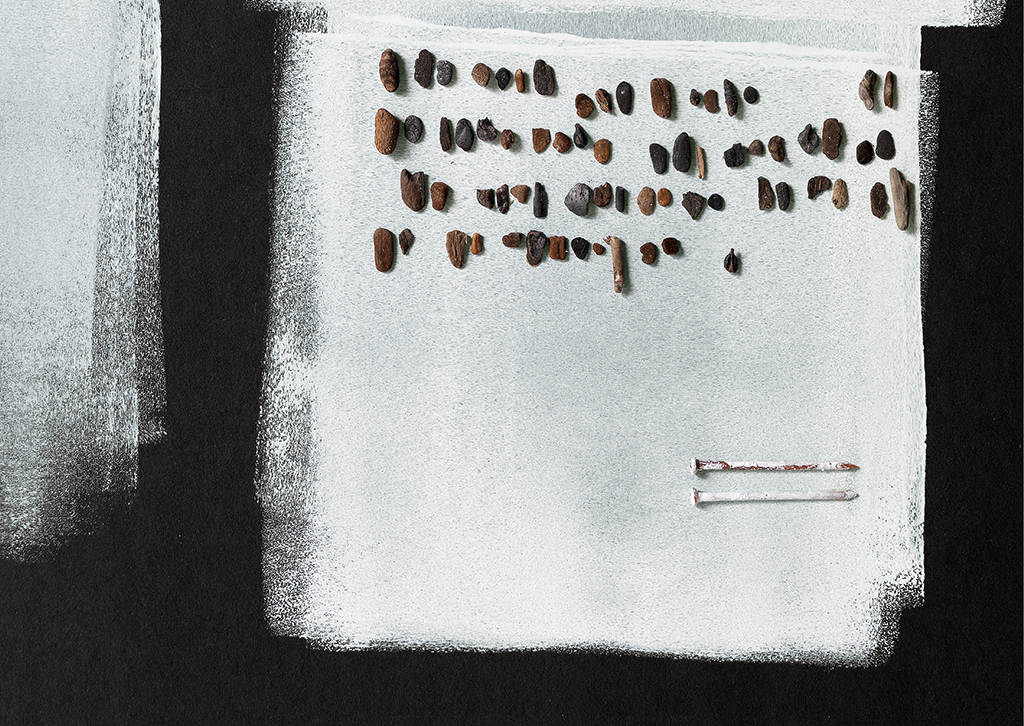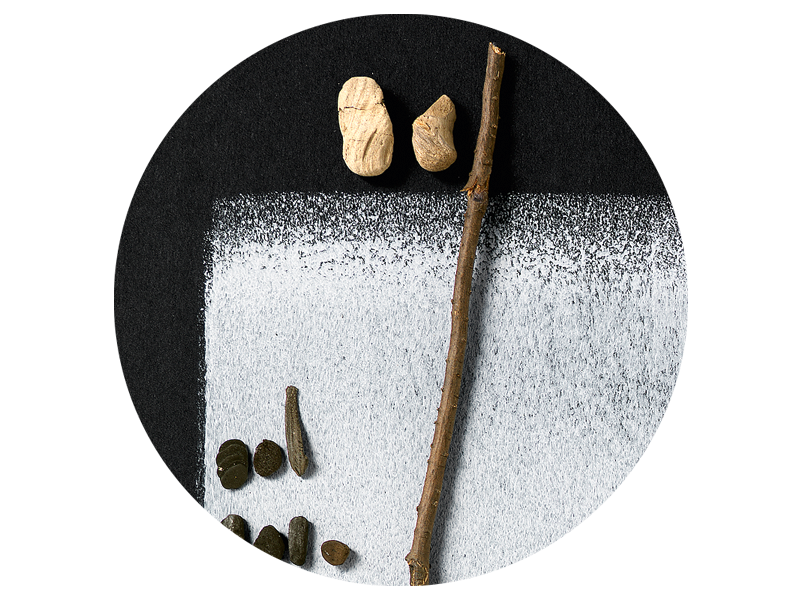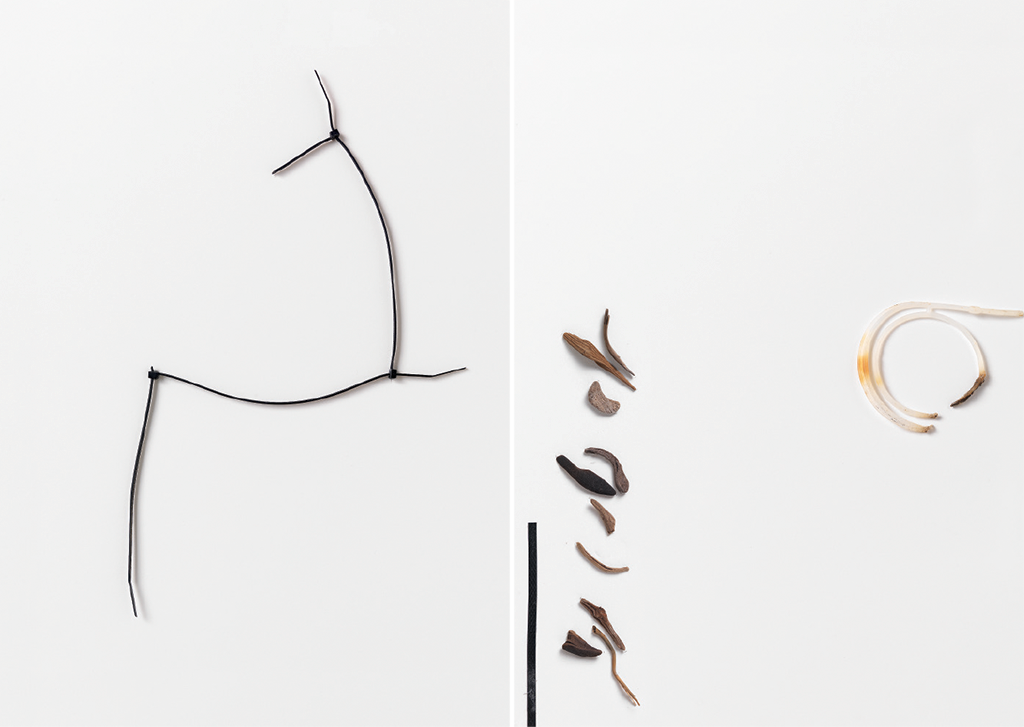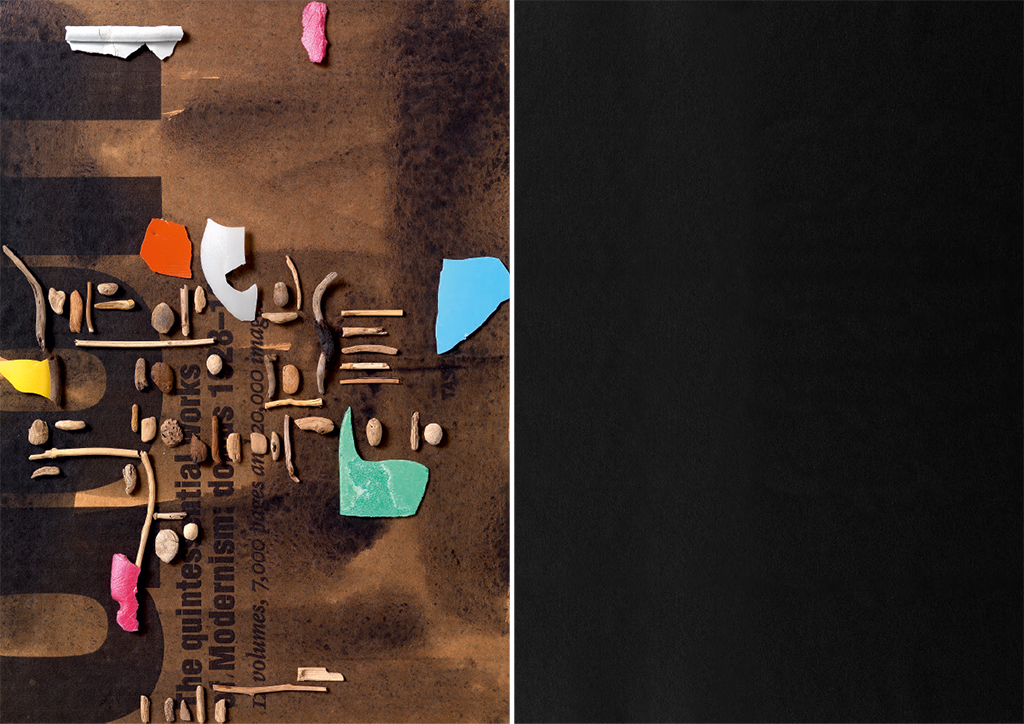Diario de un náufrago (Diary of a shipwreck survivor)
Gleanings (by Alberto Adsuara)
The movement
The movement required when something has to be picked up from the ground is always the same: bending down; a stooping movement with all its inevitable connotations of submission. Bending down is a forced movement involving strain, something you do when there is no alternative. Bending down is a movement which obliges you to bend your spine, to adopt a position which reverses the usual direction taken by the blood, a motion which takes man way back to certain primeval origins. Millet was aware of this when he painted The Gleaners, the remarkable work in which the women bend their backs to pick up what was “left over” from the harvest. That is what gleaning is all about, picking up what is left over, something left behind that the owners of the plantations weren’t bothered about - picking up a sort of detritus, in fact. Gleaning is an activity involving looking again and picking up – activities which are not necessarily limited to food however much this may usually be associated with it (for we know there are thousands of people who survive every day through stooping to rummage through the stuff that markets and supermarkets throw out). The essential element involved in gleaning is actually necessity - the need to do it regardless of the motives, and regardless of what is being looked for. Gleaning is an activity which consists in looking again, looking with a certain insistency. That is why gleaners look for things where others see nothing. Their task is universal and timeless, and the reasons leading them to glean by looking again and rummaging through things are sometimes unexplainable and others unutterable. The movement is always the same: bending down; and if submission was mentioned due to the stooping gesture, one should also mention humility. And dignity.
And nothing
What could be a heap of rubbish for others is a pile of possibilities for Pepe Gimeno. Perhaps that is what being an artist is about: making material what were extremely particular possibilities; possibilities so particular that they have no clear or well-defined function for that reason. What is perfectly clear is that for Pepe Gimeno detritus is a source of creativity. We might not know the leitmotiv, but we do indeed know that his working material is rubbish, things that nobody would stoop to pick up. He thus picks up rubbish and arranges this in order to programme an image. For Cartier-Bresson it might have all been a matter of capturing the decisive instant, but for Pepe Gimeno the aim is to propose a formal order to be set on the chaos of rubbish and to preserve it in a photographic instant. What this means is that he collects rubbish to make a statement of an extremely personal arrangement, formal in any event or formal first and foremost, through the photographic image. First he picks up and collects: the creative process thus has a dual facet. First of all looking to select the detritus, then looking to see how to arrange this. And then the stroke … the strokes, because Pepe Gimeno is all about strokes - strokes with which he creates phrases, phrases which are ideas. Ideograms. Writers create with phrases and Pepe Gimeno creates with discoveries. He creates phrases with discoveries, discoveries which were only possibilities, possibilities which arose from searching, gleaning through detritus that everyone ignores. Treasures for Pepe Gimeno. So everything comes down to seeing treasures where people see nothing. That is why Pepe Gimeno is, for me, rather like that Figueras pharmacist who seeks nothing at all.
The book


The exhibition



The work

















































